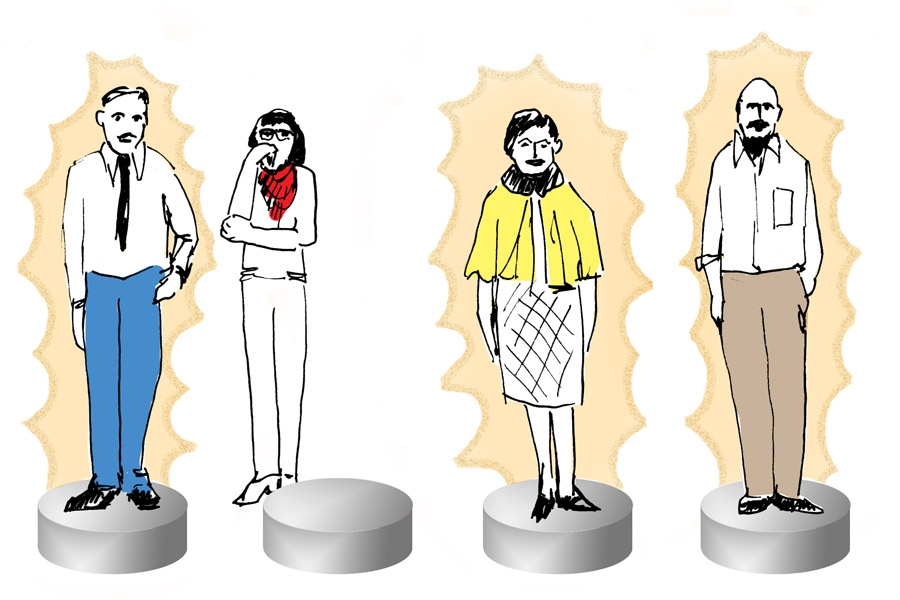How to help employees be passionate about their jobs.
Companies are taking an increasing interest in employee engagement – the extent to which employees feel passionate about their jobs – and rightly so. Studies continue to emphasize the correlation between levels of engagement and levels of productivity, customer satisfaction, and profitability.
But improving engagement is a challenge. Offering better perks and better benefits helps, but not much. In fact, according to the latest Gallup study, overall levels haven’t improved much over the past 10 years. The truth is that improving engagement isn’t about adding benefits. It’s more comprehensive than that.
There are three types of engagement and they all need to be addressed if improvement is to be achieved. An organization’s level is only as strong as the weakest of the three. The three types are personal engagement, organizational engagement, and situational engagement.
Here are insights into each type along with suggestions for improvement.
PERSONAL ENGAGEMENT
“Actions speak louder than words.”
Personal engagement is determined by a person’s internal ambition. Someone who is highly skilled but not motivated will do their job in an acceptable manner, but won’t go beyond what’s required.
In contrast, someone who is both skilled and motivated will accomplish more, be more creative, and be happier. If you have to choose between the two, you’ll get better results from someone who is highly motivated. Skills can be acquired.
The key is to start with people who are self motivated. Motivation comes from within, and nothing external can motivate someone who is unmotivated. Yes, fear can motivate someone to do something, but the results are short lived and the quality of work still remains mediocre.
The key to having a workforce that is high in personal engagement is to have the right people to begin with.
How do you bring the right people on board? Besides ensuring they have the needed technical skill set and capabilities, you need to discern whether they have the self-motivation traits you want. Determine whether they have an internal drive to better themselves on both a professional and a personal level and ascertain whether their nature (values and behaviors) is aligned with the company’s culture.
Often their background and resume will provide clues as to how ambitious and self-motivated are. As for cultural fit, that is determined by first being clear as to the company’s culture and then developing good interview questions that will reveal how well a candidate is aligned with it.
ORGANIZATIONAL ENGAGEMENT
“Nobody quits a company. They quit their boss.”
Organizational engagement: Whether someone stays engaged after they’ve joined an organization is determined by an organization’s culture and the quality of its leadership. It’s measured by how a person spends their discretionary time and effort on the business of the organization. People are engaged and enthused as they begin their career with an organization, but become increasingly disengaged in response to poor leadership and/or a dysfunctional culture.
Offering extra perks and benefits won’t do much good if leadership and culture aren’t already supportive to engagement.
How people respond relates to how well they trust and respect their leaders. Trust and respect are earned by acting with integrity, aligning actions with values, showing respect for others, being honest, being transparent, and communicating effectively. Alternatively, if a leader lacks integrity, lacks respect for others, is dishonest, and/or doesn’t communicate well, trust and respect are lost and disengagement begins.
Obviously, organizational engagement can be improved by enhancing the leadership team’s competencies.
When it comes to culture, it either supports engagement or undermines it. An organization’s culture is defined by the values and behaviors it tolerates. A culture that tolerates things like disrespect between people, reprisals, secrecy and conflict, drives down engagement. Conversely, a culture that values respect, communication, personal growth, autonomy, recognition and reward, will maintain and elevate organizational engagement.
The organization needs to examine the values and behaviors it wants to be known for and then work to ensure it walks the talk. Doing this will also help to attract more self-motivated people to the organization.
SITUATIONAL ENGAGEMENT
“An initiative without a ‘why’ is simply a goal.”
Situational engagement is determined by the meaningfulness of the initiatives undertaken. It’s about how fully people are engaged and enthused in the initiatives they’re asked to work on.
We spend great amounts of time and effort in creating good strategies along with the plans to execute them, but the real key to success lies in the actual execution of those plans. If there’s no emotional component to the strategy – no real reason “why” – the results will almost always be mediocre.
When an initiative matters to people, they invest their discretionary effort in developing creative solutions and overcoming the inevitable stumbling blocks that present themselves. Develop and communicate the “why” to go along with the initiative.
For engagement to be high throughout the organization, each source of engagement needs to be addressed. The right people need to be hired. The leadership needs to hone its competence and effectiveness. The organization’s culture must be clear and adhered to. And the initiatives undertaken must be driven by a compelling “why.”
Only after all areas have been addressed will engagement be high and strategies effectively executed. A great example of this dynamic is Apple. In his popular TED talk, leadership expert Simon Sinek uses Apple as his main example to illustrate the power of having a compelling “why.”
Michael Beck is a Portland-based executive coach, business strategist, and author of leadership book, “Eliciting Excellence.”







